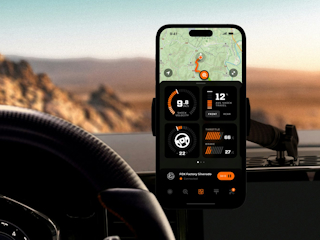Reframe experience through the lens of agility
Hiring for agility has always been important, but in the era of rapidly changing AI applications it’s imperative. And there’s always room to refine what we need from talent, and how we identify those traits.
Hiring people who can thrive under uncertainty requires rethinking what you look for in a candidate. Chris Lord, Chief Technology Officer and Co-Founder at Lambent, for example, doesn’t hire for expertise; he looks for the ability to learn and apply new knowledge and practices.
“I look for examples where you have done something that shows that you have had to go into a different domain, different space, different technology, different stack — and then learned it to produce some value,” he says.
When hiring developers, for instance, Lord doesn’t care what programming languages someone has experience in, as long as they can demonstrate that they’ve learned and adapted to different languages as needs have changed. “I hire people who want to learn something new and are comfortable living outside of what they're comfortable doing,” he says.
Taking the AI concept of continuous learning and applying it more generally to an organization’s culture can unlock new value and accelerate positive change.
Ultimately, you want to look for evidence that a candidate can handle unexpected challenges, think on their feet, and stay positive and motivated when facing difficult circumstances.
I look for examples where you have done something that shows that you have had to go into a different domain, different space, different technology, different stack — and then learned it to produce some value.
— Chris Lord, CTO and Co-Founder, Lambent
Look for examples where candidates have overcome difficult challenges and adapted quickly to new situations. Perhaps a candidate spent many months working on a complex project at the beginning of 2020 and then had to pivot the project in a new direction during the pandemic. It's also useful to ask candidates to describe how they responded when they had to take initiative and think creatively to solve problems.
Reframing experience to focus less on formal training and more on a candidate’s broader skills also helps you attract a more diverse slate of candidates—and that’s critical for ethical AI. As you experiment and set trends, greater diversity on your AI dream team provides unique perspectives and reduces the chance of building processes that perpetuate bias.
Find people who argue well and listen better
Organizational psychologist Adam Grant suggests people “Argue like you’re right. Listen like they’re wrong.” And that advice has never been more applicable than in the search for your AI dream team.
This type of attitude shows that a candidate is open to different ideas and perspectives, and willing to work together with others to reach a successful outcome. These are essential qualities to have when working alongside GenAI programs.
You need people who aren't afraid to voice their opinion but know how to listen to those around them and take their thoughts into account. In fact, Yale research shows that people who argue to learn are more likely to find success than people who argue to win. This attitude is essential in any workplace, as it allows for collaboration and growth.
Additionally, someone who argues well but listens better will likely be a more effective communicator. They understand how to respectfully express and justify their perspectives, while also being open to hearing other peoples’ viewpoints—qualities that are important for experimenting with AI.
Assemble intentionally diverse teams
A team full of people willing to hear each other out and learn from new perspectives is primed for higher diversity. And for teams working with and training AI algorithms, that matters. The more diverse your team is, the fewer biases and blindspots you’re likely to incorporate into your GenAI programs.
Teams composed of people with similar backgrounds — even if those backgrounds are universally impressive — rarely perform as well as those pioneered by diverse teams, Mullins notes. “The most successful projects are those that can incorporate diverse, interdisciplinary viewpoints.”
Applying this concept to a team that works with AI is one of the smart bets you need to make to get ahead. “No model lives in isolation — it needs to interact with customers, the business, and otherwise the world at large,” Mullins continues. “If you're closing your hiring aperture to only focus on a certain profile, you are almost certainly introducing blind spots that will prevent you from solving the hardest problems, the ones that require a lot of diverse contexts.”
As we brave a new frontier, AI's impact on hiring offers immense possibilities for growth and innovation. By fostering a team versed in AI, businesses can unlock new heights in productivity, creativity and efficiency.












